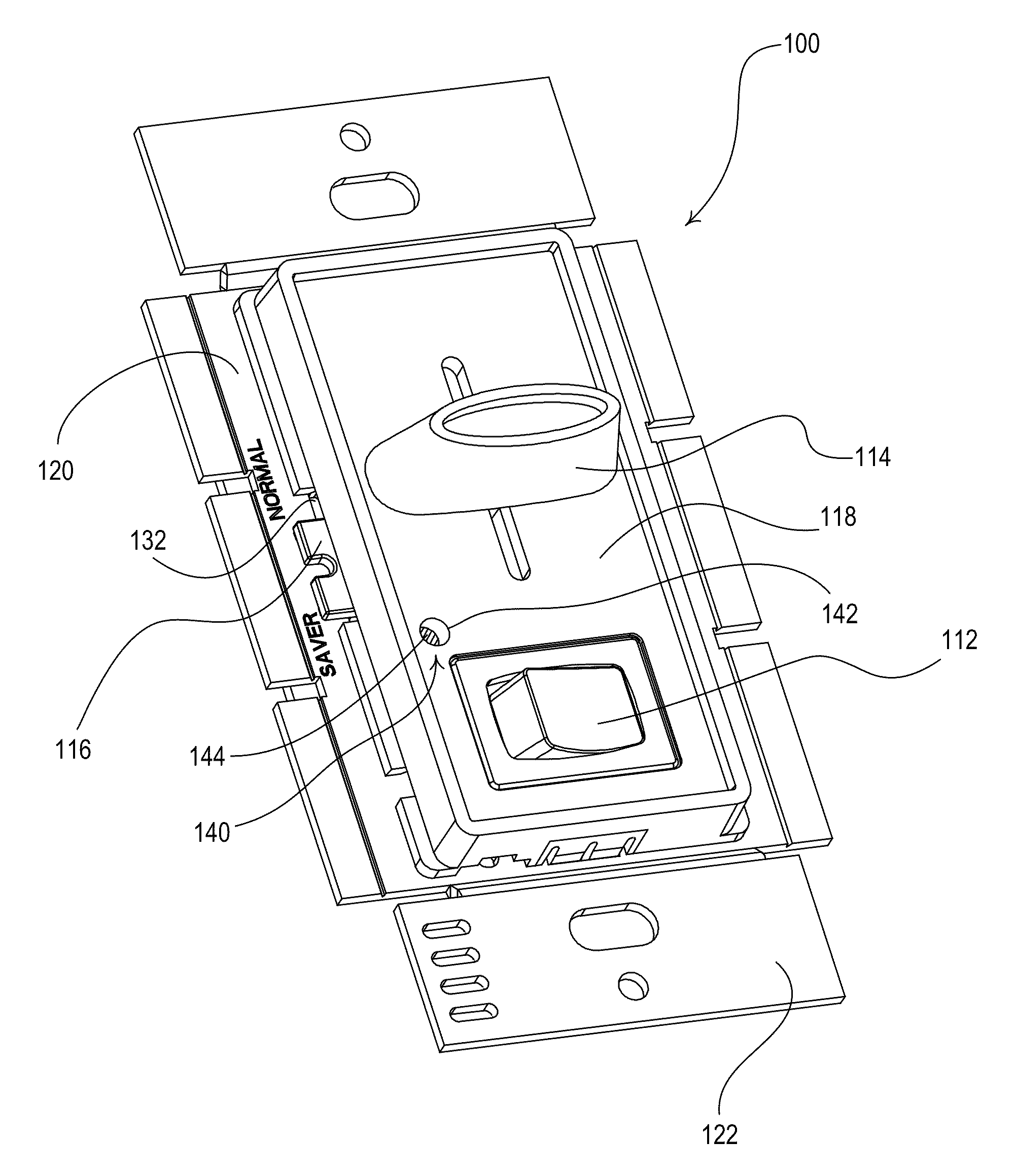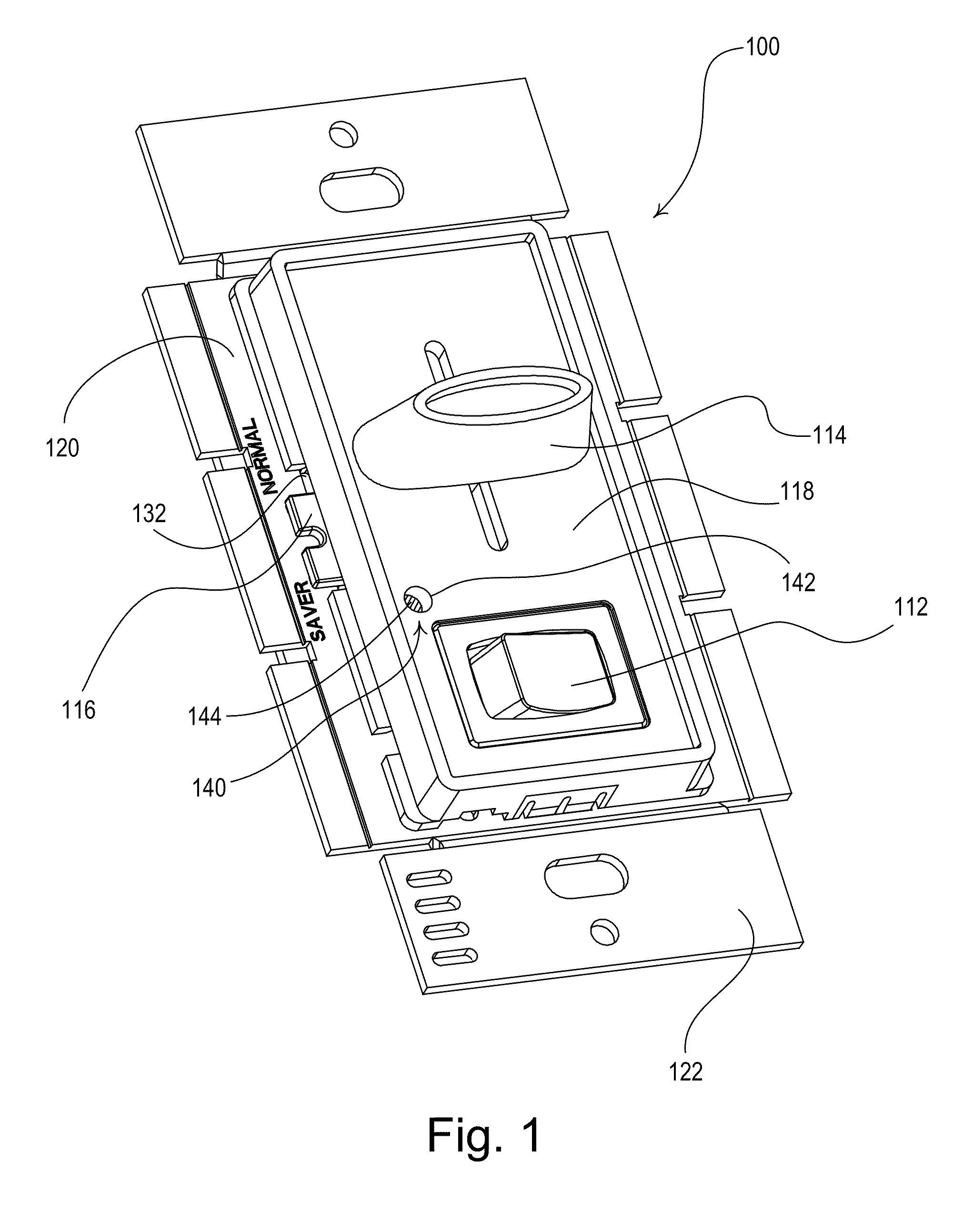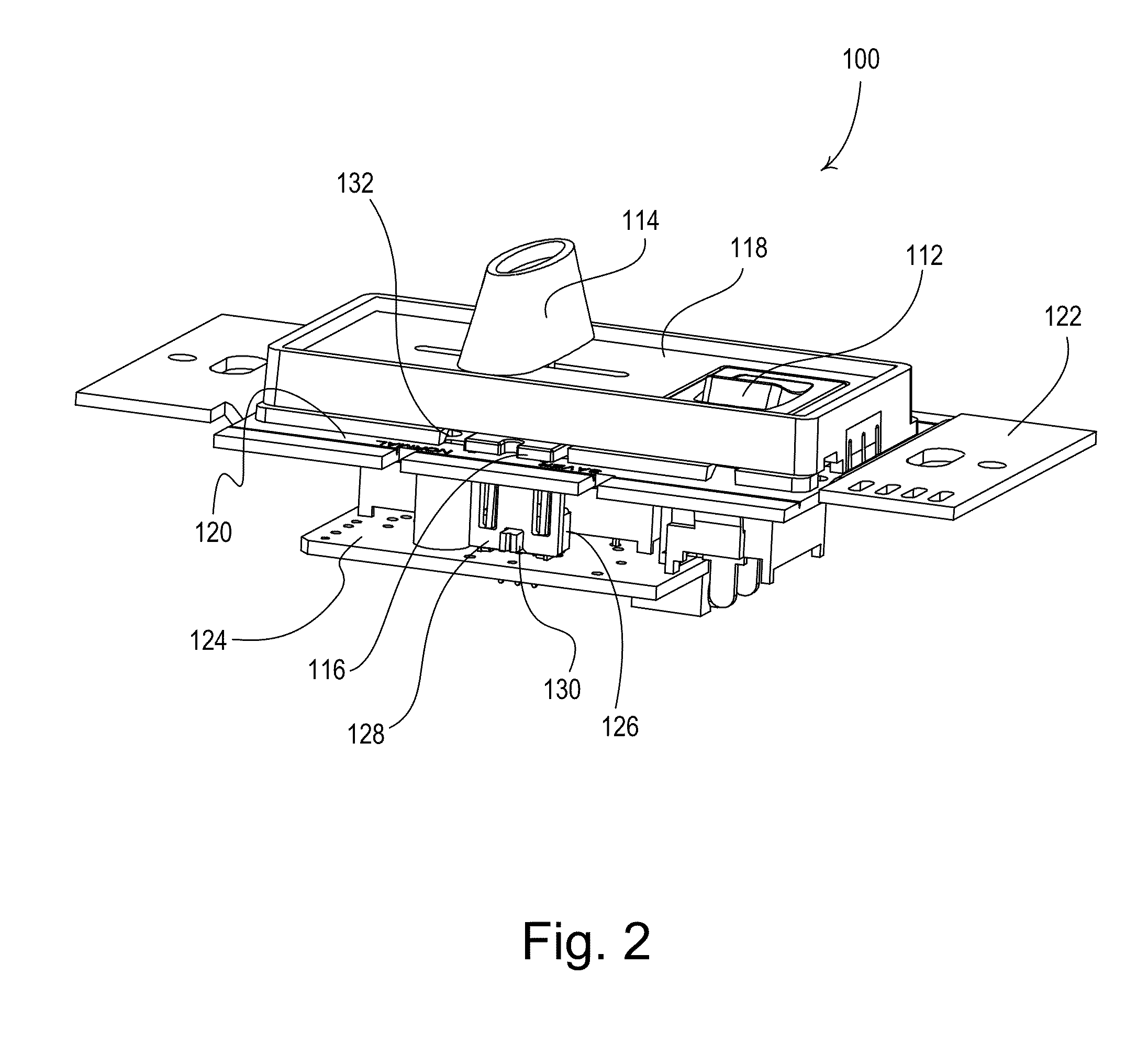Load Control Device Having a Visual Indication of an Energy Savings Mode
a technology of energy saving mode and control device, which is applied in the direction of discharge tube/lamp details, electric discharge lamps, discharge tube incandescent screens, etc., can solve the problem of not having a visual indication that the high-end trim has been adjusted, and achieve the effect of reducing the amount of power
- Summary
- Abstract
- Description
- Claims
- Application Information
AI Technical Summary
Benefits of technology
Problems solved by technology
Method used
Image
Examples
first embodiment
[0032]FIGS. 1 and 2 are perspective views of the user interface of a wallbox dimmer switch 100 that provides an energy-saver (ES) mode according to the present invention. The dimmer switch 100 is adapted to be wall-mounted in a standard electrical wallbox. The dimmer switch 100 includes a dimmer circuit for controlling the amount of power delivered from an alternating-current (AC) source 102 (FIG. 4) and a lighting load 104 (FIG. 4), such as an electric lamp. The dimmer switch 100 also comprises a user interface having a rocker switch 112, an intensity adjustment actuator (e.g., a slider actuator 114), and an energy-saver mode adjustment actuator 116. The rocker switch 112 allows for turning on and off the lighting load 104, while the slider actuator 114 allows for adjustment of the amount of power delivered to the lighting load 104 and thus for adjustment of a present lighting intensity L (i.e., a perceived lighting intensity) of the lighting load 104. The perceived lighting intens...
second embodiment
[0046]FIG. 6 shows a front view of a “smart” wallbox dimmer switch 200, which provides a visual indication that the dimmer switch 200 is in an energy-saver mode according to the present invention. The dimmer switch 200 is adapted to be wall-mounted in a standard electrical wallbox. The dimmer switch 200 is operable to be coupled in series electrical connection between an AC power source 202 and an electrical lighting load 204 for controlling the amount of power delivered to the lighting load, and thus the present intensity L between the high-end intensity LHE and the low-end intensity LLE. The dimmer switch 200 comprises a faceplate 210 and a bezel 212 received in an opening of the faceplate. The dimmer switch 200 comprises a control actuator 214 and an intensity adjustment actuator (e.g., a rocker switch 216). Actuations of the control actuator 214 toggle, i.e., alternately turn off and on, the lighting load 204. The dimmer switch 200 may be programmed with a lighting preset intens...
third embodiment
[0064]FIG. 10 shows a front view of a smart wallbox dimmer switch 300 that provides a visual indication that the dimmer switch is in an energy-saver mode according to the present invention. The dimmer switch 300 is operable to receive radio-frequency (RF) signals 306 from an RF remote control 330. The dimmer switch 300 comprises an RF receiver (not shown), while the remote control 330 comprises an RF transmitter (not shown) to allow for one-way RF communication between the remote control and the dimmer switch. The RF receiver of the dimmer switch 300 and the RF transmitter of the remote control 330 are each coupled to internal RF antennas to allow for receipt and transmission of RF signals, respectively. Examples of antennas for wall-mounted dimmer switches are described in greater detail in U.S. Pat. No. 5,982,103, issued Nov. 9, 1999, and U.S. Pat. No. 7,362,285, issued Apr. 22, 2008, both entitled COMPACT RADIO FREQUENCY TRANSMITTING AND RECEIVING ANTENNA AND CONTROL DEVICE EMPLO...
PUM
 Login to View More
Login to View More Abstract
Description
Claims
Application Information
 Login to View More
Login to View More - R&D
- Intellectual Property
- Life Sciences
- Materials
- Tech Scout
- Unparalleled Data Quality
- Higher Quality Content
- 60% Fewer Hallucinations
Browse by: Latest US Patents, China's latest patents, Technical Efficacy Thesaurus, Application Domain, Technology Topic, Popular Technical Reports.
© 2025 PatSnap. All rights reserved.Legal|Privacy policy|Modern Slavery Act Transparency Statement|Sitemap|About US| Contact US: help@patsnap.com



